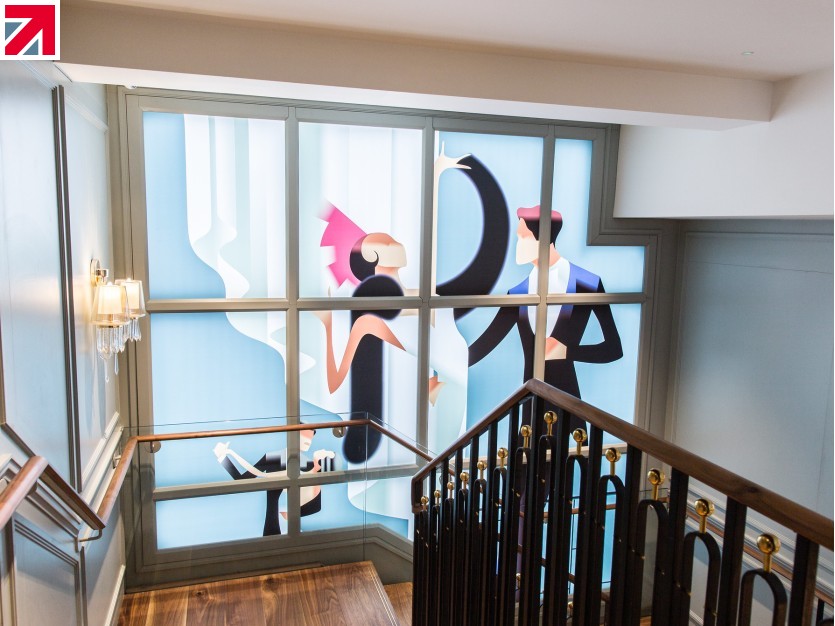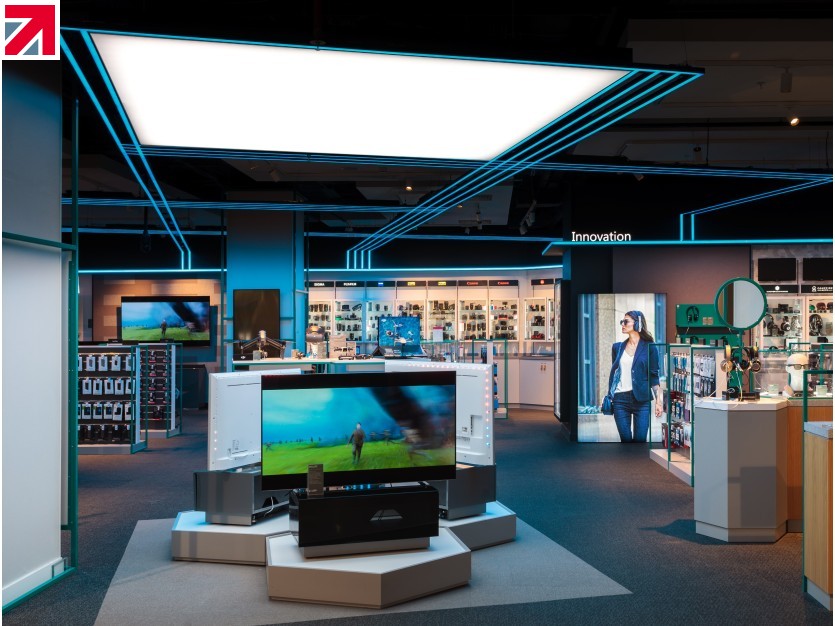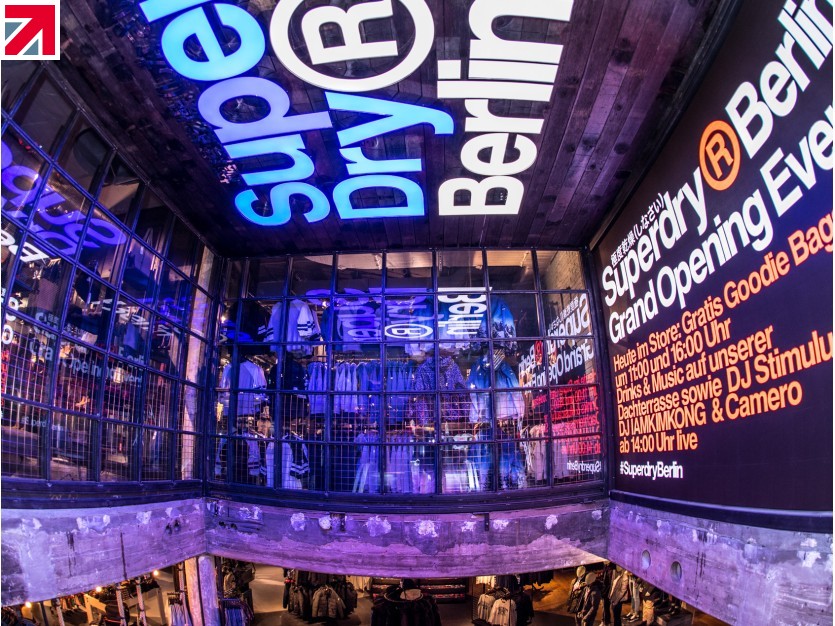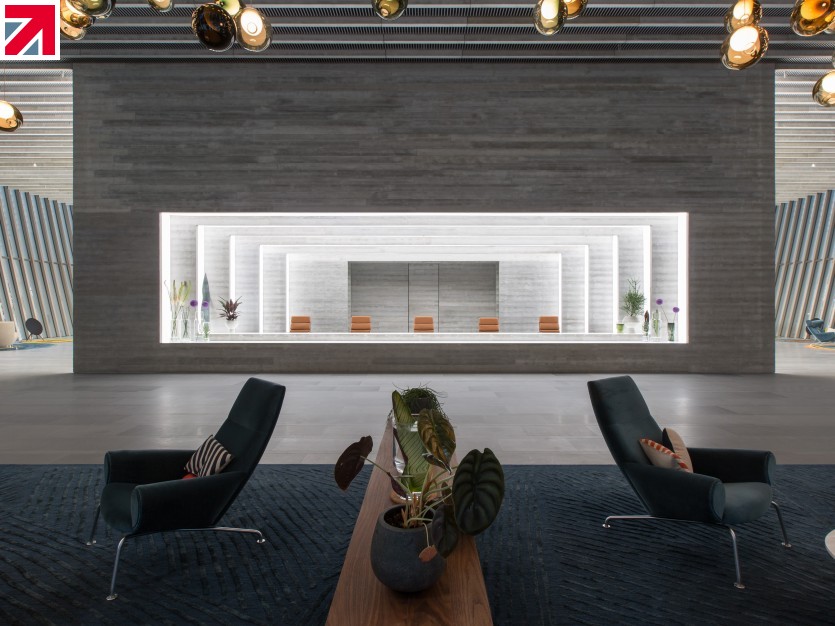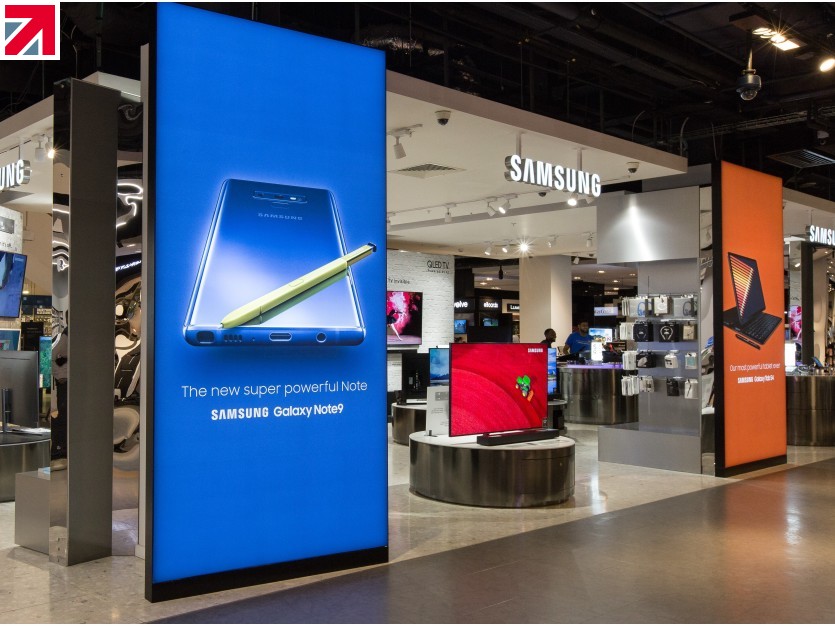Lightboxes are an ultra-effective visual communication tool for use in retail spaces as well as a sleek, energy-efficient lighting solution for a wide range of interior environments. Lightboxes use LED technologies to illuminate fabric or rigid panel graphics that are housed within outer frames to create visually exciting displays that are instantly visible, even when used in spaces with low levels of ambient lighting.
One of the most attractive features of LED lightboxes for retailers and interior designers alike is the impressive scope for customisation that they are able to offer. Lightboxes can be built in almost any size, shape and material finish and provide an accessible, cost-effective way of creating branded displays, simply with the use of graphics printed with custom designs, messages and images.
Lightboxes are proven to be an incredibly effective way of increasing visibility and captivating consumer attention, with research suggesting that illuminated graphics can increase sales by approximately 30% via both direct and subliminal promotional messaging.
Benefits of LED Lightboxes
Maximising brand awareness – today’s markets are saturated with advertisements and defined by a situation of information overload. This means that brands need to make more effort than ever before to capture the attention of shoppers in busy, highly-competitive retail environments. LED lightboxes utilise the fact that our eyes are drawn to colourful illuminated displays more than non-illuminated ones to create eye-catching graphic displays that are guaranteed to stand out and make a lasting impact on passers-by.
Cost-effectiveness – lightboxes are easy to install and inexpensive to update alongside changing product promotions, seasonal trends, store reconfigurations and more. Simply by removing the fabric or rigid panel graphics and replacing them with new ones, LED lightboxes can be transformed into entirely new displays that are ultra-relevant and optimised to capture the imagination of shoppers…all without breaking budgets.
Flexibility – lightboxes are one of the most flexible visual communication tools in a retailer’s arsenal. As well as offering incredible scope for customisation in terms of the graphics used, LED lightboxes also provide great flexibility and choice when it comes to size, shape, lighting technologies, installation method and enhancements. They can be wall-mounted, free-standing, suspended, single-sided, double-sided and even dynamic…all to ensure that they perform as effectively as possible wherever they are used.
Sustainability – using LEDs instead of traditional incandescent, fluorescent or halogen bulbs, lightboxes are considerably more energy-efficient than other illuminated display solutions. What’s more, with outer frames made from sustainably-sourced and widely-recyclable materials such as aluminium, the environmental benefits of LED lightboxes become even greater.
Durability and longevity – being a form of solid-state lighting, LEDs are considerably more hard-wearing than other light sources that use electrical filaments or gas. Additionally, when appropriate thermal management methods are used to dissipate any heat energy away from the diode itself, the lifespan of LED components is longer than all other light sources.
Lightbox Sizes and Depths
The frame of a lightbox is sometimes overlooked but it is actually a very important feature that can greatly enhance the overall efficacy of illuminated displays and interior lighting systems.
From ultra-slim to large-format, lightboxes can be specified in sizes from 200mm to 50m wide. The final size of the graphic required impacts upon how strong the frame needs to be to support the graphic display. This can be achieved using aluminium profiles in a range of depths, which are purpose-built to provide rigidity without compromising the aesthetic appeal of the lightboxes themselves.
Where the overall size of the lightbox will be less than 2msq, incredibly thin profiles can be used which result in slimline graphic displays between 18-34mm deep. As the size of the lightbox increases, the frame depth also increases to provide adequate structural integrity and place the LEDs at the optimal distance between the graphic to ensure homogenous illumination.
Lightbox frames can also be engineered in custom sizes and shapes to create illuminated displays that will integrate seamlessly with the architecture of interior spaces. Single-diode boards mean that designers and visual merchandising teams can have complete flexibility when specifying the dimensions of lightboxes, such as in the bespoke staircase lightbox installation below.
LED Lighting
Illuminating a graphic display goes beyond putting a light behind a graphic. Different applications result in a range of illumination techniques and LED specifications. There are three main methods of applying illumination to a lightbox:
Edge-lit illumination is created using optical grade acrylic that has an algorithmically-controlled dot pattern laser-etched onto the surface. When light passes through the acrylic, the light is picked up by the etched dots, resulting in optimal light distribution across the entire display.
Back-lit illumination is the most commonly used method of adding light to graphic displays. Backlit lightboxes are created with a variety of LED options which are specified depending on a few factors including light output required and power consumption, mounted to the back panel.
Side-fire illumination consists of high power side-fire LEDs, integrated into the light-box frame’s interior channel, which are fitted with an optic lens that projects light evenly across graphics whilst providing the ability to flat-pack the entire display as there is no back panel.
In terms of specifying the LED lighting itself, there are many considerations that result in producing the perfect graphic display. Below are three of the most common requests from clients when specifying LED lightboxes.
Luminous flux – the amount of light output from a light source is measured by ‘luminous flux’. It provides an estimate of the amount of light the graphic display will produce, and a higher ratio of luminous flux to consumed power is more efficient.
Power consumption – typically retailers have energy consumption targets to hit, and are wary of how much power lighting consumes in an effort to minimise this figure. As the efficiency of a graphic display depends on multiple factors, such as the output of the LEDs and the driver, it’s best to consult with your supplier on what your exact requirements are, which will allow them to test and produce prototypes for your environment.
Colour temperature – LEDs can be specified in different colour temperatures, which range from warm light (around 2700K) to cool light (around 7000K). Different colour temperatures result in graphics appearing closer to their original artwork, for example, if your graphic was a snow scene, a cool white LED colour temperature would ensure the graphic retained a blue-white, rather than a red-white.
Graphic Printing
The most common graphics used in lightboxes are made from fabric, which is specifically formulated for illuminated applications. These fabrics are supplied with sewn-in silicone edging which allows quick and easy application into the light-box frame. These ensure that when light is applied to the rear of the graphic, the light is diffused evenly so that hot spots are not visible and the vibrancy of the graphics are enhanced rather than washed out. However, there are two printing processes available.
Two different processes used for printing fabric graphics are detailed below:
UV Printing – UV printing involves an inkjet process whereby once the ink is applied to the fabric, it is cured under ultra-violet light, ensuring that the ink is dried onto the top layer almost immediately, resulting in a high definition print as the ink doesn’t have time to spread or bleed into the fabric. Generally, UV printing is considered to give you a more vibrant effect and allows you to achieve better contrast, meaning darker colours are richer.
Dye Sublimation – Dye-sublimated printing is a two-step process. Firstly the graphic or image is printed onto the fabric and then bonded (or sublimated) into the fabric, generating a much more durable printed textile, which is perfect for fabrics that are destined to be handled more. We recommend dye sublimated printing for textiles that will be handled many times and for all our Magnetik light-boxes, to ensure the image remains in place even when shelves and hooks accessories are constantly being moved about.
Conclusions
LED lightboxes are a highly effective way of creating graphic displays with integrated illumination for maximum impact as well as a sleek, energy-efficient alternative to traditional interior lighting systems.
At Unibox, we have been engineering a wide range of solutions using LED lightboxes for over a decade, meaning our designers and product developers are well-versed in managing the demands of everything from one-off bespoke projects to large multinational roll-outs. Contact our team to find out more about how LED lightboxes can add value to your business.
Find out more about Unibox on their member profile page here
Member-created content 3 years ago | From members
